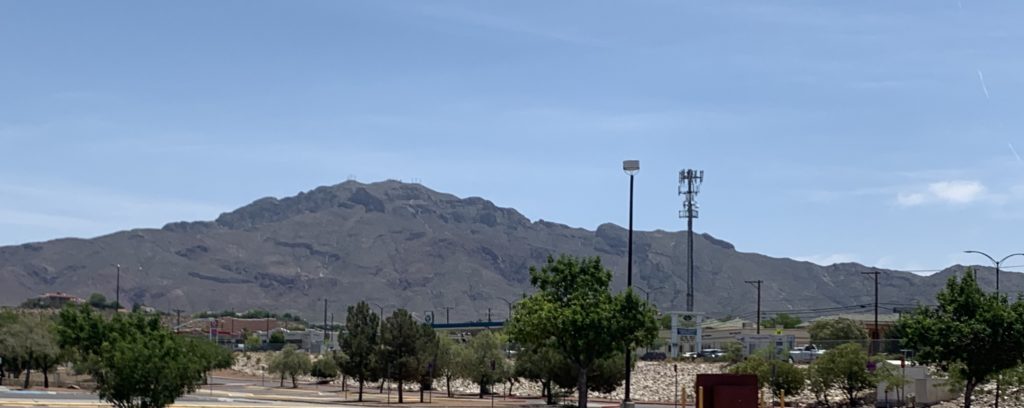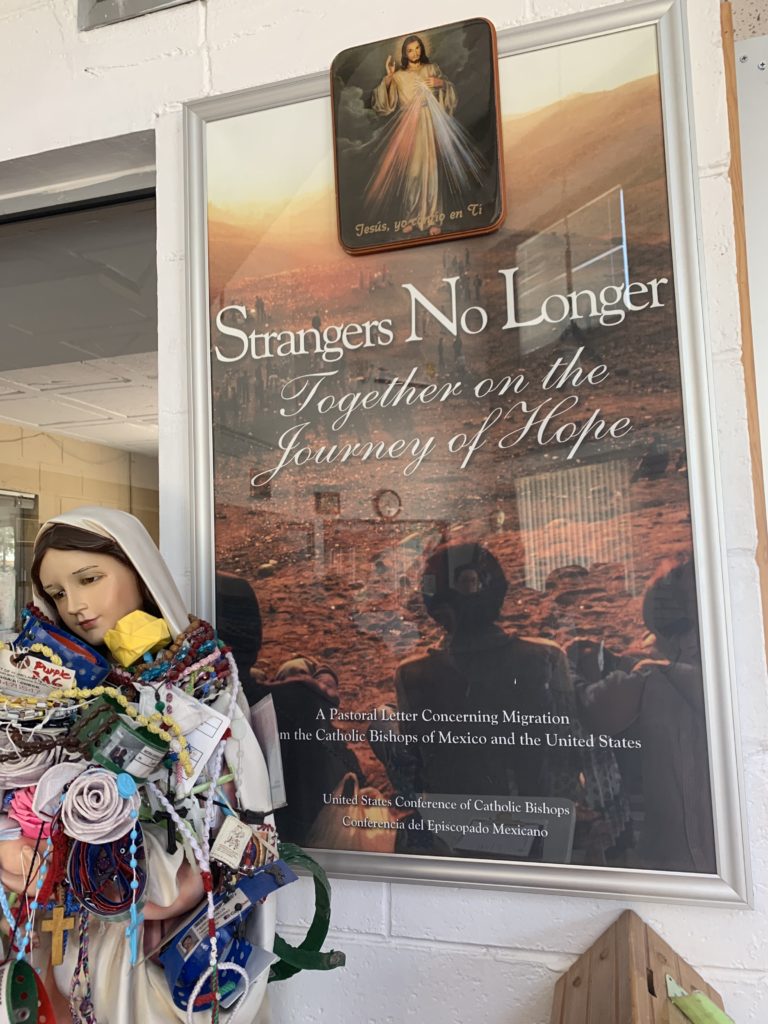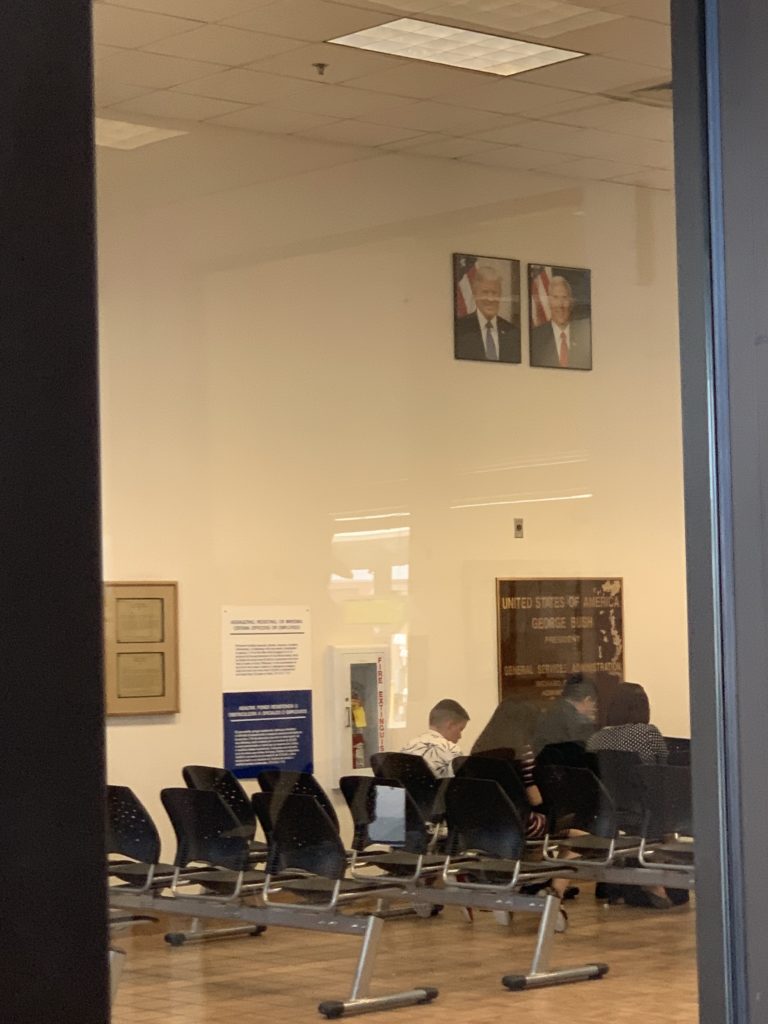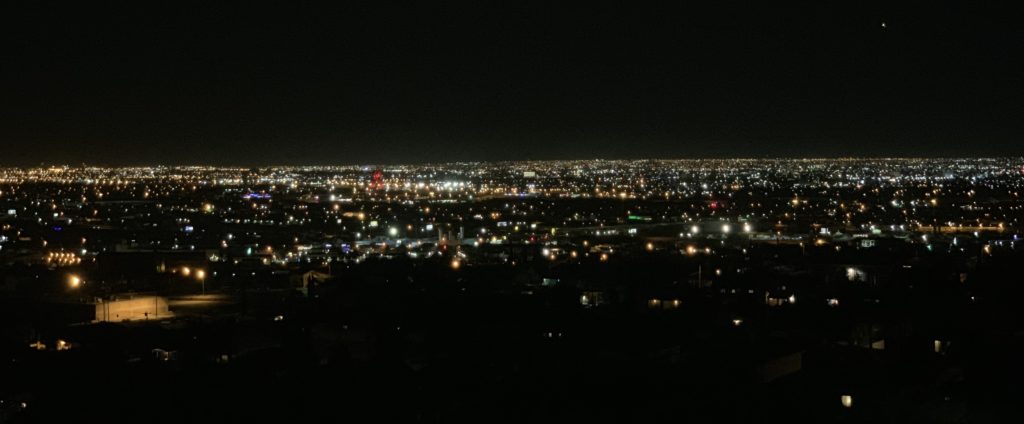My family moved to the west Texas town of El Paso in 1985. As is a common American experience, I left for college and never really came back. The familiarity of the dry heat, desert landscape, intertwined binational culture, and lack of pretense are some of the reasons why this place feels so unique and special and… like home.

**
Carlos Spector has been practicing immigration law in El Paso for 30 years. When I reached out to him to share my interest in learning about the border crisis and getting proximate, he was more than happy to oblige.
I arrive on the eve of the 4th of July. Carlos and I meet Ilka, a community organizer with the Hope Border Institute, and Imelda, immigration attorney with Catholic Charities, at a downtown bar with strong cocktails and a surprisingly hipster vibe. While most Americans were enjoying the beginning of a long holiday of grilling and fireworks, Imelda, Ilka and Carlos huddle around a table catching up on what they are seeing and hearing at the courthouse and on the border. The policy directives coming from the administration further clog a broken system and, frankly, feel punitive.
Imelda took the lead walking me through what is required to prevail in a political asylum case. Suffice it to say, it’s hard af to get political asylum in the United States. And, now that Donald Trump is president and the fringe elements are calling shots, it’s almost impossible barring extraordinary sets of facts and circumstances coupled with a whole lot of breaks.
The next morning, our gang piles into a sedan and crosses the border. We arrive at a Catholic shelter in Juarez. The property is well kept and while people are not free to come and go due to safety concerns, it doesn’t feel like a cage.

We are there for a Know Your Rights information session and to visit with people to identify who may have a strong asylum case so they can have legal representation. A group of 40 or so gather at tables and booths in a makeshift dining room. Women with hairnets prepare the next meal while also leaning in to listen.
Before we start, a faith leader guides the group in prayer. Eyes closed, hands clasped, silent prayers for hope and a better life. Some moms breastfeed to keep their babies from crying, others rock their kids in their arms. Children are in and out finding random objects to entertain themselves with.
Imelda and a volunteer walk the largely female audience through what lays ahead. Carlos interprets for me so I can learn, too.
From there, Carlos and I meet individually with about a dozen pre-selected women. U.S. immigration law creates a high barrier for political asylum (barring special arrangements with limited countries like Cuba). Because the bar is so high and the system is so broken, none of the women and children we sat with have a shot, according to Carlos. He conveys to each person that they ultimately have three options:
- proceed knowing that the conditions that await them on the other side of the border may be very difficult and ultimately they will be deported,
- apply for asylum in Mexico, or
- return to their country with the help of the UN
These are hopeful people looking for a better life for their families without a true understanding of how utterly hopeless the circumstances are. Casa del Migrante is the only shelter we visited on our trip so I can’t speak to the conditions elsewhere. I imagine they are not nearly as humane and sanitary.
Through intentional and insidious actions, the Trump administration is exacerbating the humanitarian crisis and these migrants have no context for this. Because of strategies like the Migrant Protection Protocols (MPP) and Metering, the number of migrants allowed to seek refuge in the United States is diminishing.
This is how MPP works. An asylum seeker arrives at a port of entry and may receive a number and told to wait in Mexico for their number to be called. To date, this may take 3-4 months. They have no job, no childcare, no home, no safety from predators, and other scary forces. MPP is piloting in Tijuana and El Paso with plans to roll out at ports of entry across the U.S. border.
**

On our way back to El Paso, Imelda and Carlos had a special pass so they could use the expedited lane to cross the border. Me, Ilka, my old friend Peter (an El Paso City Council Member) and his girlfriend Tatiana, hop out of the car to walk over the border. Just about two yards from the port of entry, a guard asks to see my passport. This illegal practice is known as metering and is something that Custom and Border Patrol (CPB) employs, of late, to limit the number of people requesting asylum at a port of entry each day. Migrants are told to go back to Mexico and put their name on a wait list. This piece by NPR tells you all about it.
Late that evening I found myself really close to Scenic Drive. This scenic street looks out over the sister cities. From this vantage point you see a blanket of twinkling lights. There’s no telling where one city –or one nation –begins and the other ends.

I have more to say about US Customs and Border Patrol and the camps they are running, the lack of checks in immigration court and how it makes a mockery of the rule of law, the imminent ICE raids and how never again is now… and why we should get behind Julian Castro’s call to repeal KKK backed Sec. 1325 that criminalizes reentry. Stay tuned for more.
Donate to Catholic Charities of Las Cruces (who are doing the lords work) and Hope Border Institute. Both organizations are trusted and supporting the crisis in critical ways.



